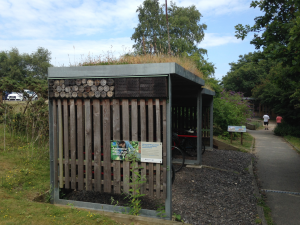Can you see the wood for the trees? – By Rosie Whicheloe
BLOG
 Can you see the wood for the trees?
Can you see the wood for the trees?
Biodiversity net gain and nature-based solutions are the sector’s new buzz words. Research papers and guidance documents abound on the subject and people believe they will transform our ability to protect and restore nature. But are we using the information and these new tools to the greatest effect? Are there any critical factors that ensure we achieve long-lasting, positive outcomes?
Next month CIEEM will present a two-day conference to help answer these questions. In this blog, I thought I would contribute to the discussion by introducing, very briefly, a few thoughts of my own.
- Invite other disciplines to think. We can’t maximise biodiversity without the help of others. That includes the project engineers, the architects, landscape architects, the local community and the client. Nor does it work well if we don’t have the corporation of the local authority; planners, highways, water companies and catchment partnerships. And you can’t rely on email communication. Call them. Attend more meetings. Work hard to communicate the necessity of nature to achieve a successful development. There are economic, social and environmental benefits by protecting habitats and designing with nature for The environmental crisis should hopefully reduce opposition, but viability assessments and other policy objectives are tricky to balance in favour of biodiversity. This is a design and management challenge that needs everyone on board for it to work.
- From landscape to window box. When assessing a site for protected species we take the influence of the surrounding area into consideration, but so often a site’s context is forgotten when it comes to habitat creation. Most local authorities have spatial strategies, often under different guises: green infrastructure, open space, ecological networks, biodiversity opportunity areas, landscape character assessment and green grid. Designers love them as they bring a narrative to the design process, shaping where and what habitats might work on site. At the smaller scale, tapping into local communities and nature partnerships can identify synergies between new development and local needs that can bring about positive change.
- Beyond bat and bird boxes. If you have a site where bird and bat boxes are the only enhancements being put in, don’t stop there. We need to creatively embed functioning habitats into urban areas. Take a look at Green Roof Shelters for some clever ideas for small spaces and invertebrate-centric enhancements.
- Design opportunities for biodiversity. When working in urban areas, it will help you tremendously to understand how buildings, streets and open spaces can be designed for nature and people at the same time.
 Attending inter-disciplinary events on how to design sustainable drainage systems (SuDs) or green roofs and visiting good schemes locally[1] will improve your reports and discussions with clients.
Attending inter-disciplinary events on how to design sustainable drainage systems (SuDs) or green roofs and visiting good schemes locally[1] will improve your reports and discussions with clients.
- Legislation matters. Up to a point. For many of us, legislation is why we have a job. Clients pay us to ensure they don’t break the law and can carry on with building their development. We have spent so much time getting this first bit right, that when it comes to enhancements, we have run out of steam. For developers and design teams this is the stuff they need the most. You have to admit, our reports are pretty heavy going and people don’t read as much as they used to. So, help them out. Use photographs or graphics to depict recommendations. And why not list benefits the scheme could boast following mitigation of protected species? How cool would it be for a young family to live next to woodland that supports dormouse? Do your clients understand this?
- Make interdisciplinary friends. It’s about thinking bigger, better and more joined up, not just from a practical conservation perspective but in our outlook, in our professional interactions and how we spend our training budget. Creating places that can benefit people and wildlife requires specialist skills in urban design, landscape planning and planting design, but most importantly of all we need to be good communicators.
- [1]g. Kidbrooke Village (Royal Borough of Greenwich), Woodberry Wetlands (London Borough of Hackney), the Olympic park (London Borough of Newham), Green roofs at Goodman’s Fields and ponds at West India Quay (London Borough of Tower Hamlets).
Rosie is a Landscape Ecologist, working for London Wildlife Trust, whose aim is to create a London alive with nature. She works with a range of developers and design teams, helping them to maximise biodiversity through design and land management. She volunteers for CIEEM and the Landscape Institute member’s branch.
Blog posts on the CIEEM website are the views and opinions of the author(s) credited. They do not necessarily represent the views or position of CIEEM. The CIEEM blog is intended to be a space in which we publish though-provoking and discussion-stimulating articles.

 Attending inter-disciplinary events on how to design sustainable drainage systems (SuDs) or green roofs and visiting good schemes locally
Attending inter-disciplinary events on how to design sustainable drainage systems (SuDs) or green roofs and visiting good schemes locally